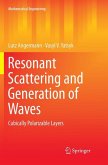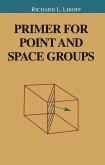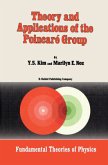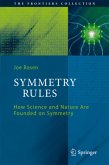Every process in physics is governed by selection rules that are the consequence of symmetry requirements. The beauty and strength of group theory resides in the transformation of many complex symmetry operations into a very simple linear algebra. This concise and class-tested book has been pedagogically tailored over 30 years MIT and 2 years at the University Federal of Minas Gerais (UFMG) in Brazil. The approach centers on the conviction that teaching group theory in close connection with applications helps students to learn, understand and use it for their own needs. For this reason, the theoretical background is confined to the first 4 introductory chapters (6-8 classroom hours). From there, each chapter develops new theory while introducing applications so that the students can best retain new concepts, build on concepts learned the previous week, and see interrelations between topics as presented. Essential problem sets between the chapters also aid the retention of thenew material and for the consolidation of material learned in previous chapters. The text and problem sets have proved a useful springboard for the application of the basic material presented here to topics in semiconductor physics, and the physics of carbon-based nanostructures.
From the reviews:
"It was developed for a graduate course taught mostly by Millie Dresselhaus at MIT for more than 30 years, with many revisions of lecture notes. Very much a graduate text or specialist monograph, the book covers a wealth of applications across solid-state physics. ... The book can be warmly recommended to students and researchers in solid-state physics, either to serve as a text for an advanced lecture course or for individual study ... ." (Volker Heine, Physics Today, November, 2008)
"This textbook is based on the authors' pedagogical experience during their 30 years at MIT. ... the book develops all of the relevant mathematics (linear algebra) and the necessary physics (quantum mechanics), it is eminently suitable to a wide audience in physics, chemistry and materials science." (Barry R. Masters, Optics and Photonics News, July/August, 2009)
"This is an excellent text ... . originates from lectures by Charles Kittel and J. H. van Vleck in the 1950s and much of the material was presented in courses by the authors over the last three decades. The material is meant for Electrical Engineering and Physics students at the graduate level ... . has exercises at the end of each chapter and an extensive set of appendices. The exposition is clear and detailed. This is a very good book for its target audience." (W. Miller Jr., Zentralblatt MATH, Vol. 1175, 2010)
"The goal of the book under review is to teach group theory in close connection to applications. ... Every chapter of the book finishes with several selected problems. Specific to this book is the feature that every abstract theoretical group concept is introduced and applied in a concrete physical way. This is why the book is very useful for anyone interested in applications of group theory to the wide range of condensed matter phenomena." (Oktay K. Pashaev, Mathematical Reviews, Issue 2010 i)
"It is highly welcomed because of its well-thought structuring and the plenty ofnon-trivial examples. The authors develop those parts of the theory of groups which are interesting for physicists, from chapter to chapter offering nearly at any step one or more informative application." (G. Kowol, Monatshefte für Mathematik, Vol. 157 (2), June, 2009)
"It was developed for a graduate course taught mostly by Millie Dresselhaus at MIT for more than 30 years, with many revisions of lecture notes. Very much a graduate text or specialist monograph, the book covers a wealth of applications across solid-state physics. ... The book can be warmly recommended to students and researchers in solid-state physics, either to serve as a text for an advanced lecture course or for individual study ... ." (Volker Heine, Physics Today, November, 2008)
"This textbook is based on the authors' pedagogical experience during their 30 years at MIT. ... the book develops all of the relevant mathematics (linear algebra) and the necessary physics (quantum mechanics), it is eminently suitable to a wide audience in physics, chemistry and materials science." (Barry R. Masters, Optics and Photonics News, July/August, 2009)
"This is an excellent text ... . originates from lectures by Charles Kittel and J. H. van Vleck in the 1950s and much of the material was presented in courses by the authors over the last three decades. The material is meant for Electrical Engineering and Physics students at the graduate level ... . has exercises at the end of each chapter and an extensive set of appendices. The exposition is clear and detailed. This is a very good book for its target audience." (W. Miller Jr., Zentralblatt MATH, Vol. 1175, 2010)
"The goal of the book under review is to teach group theory in close connection to applications. ... Every chapter of the book finishes with several selected problems. Specific to this book is the feature that every abstract theoretical group concept is introduced and applied in a concrete physical way. This is why the book is very useful for anyone interested in applications of group theory to the wide range of condensed matter phenomena." (Oktay K. Pashaev, Mathematical Reviews, Issue 2010 i)
"It is highly welcomed because of its well-thought structuring and the plenty ofnon-trivial examples. The authors develop those parts of the theory of groups which are interesting for physicists, from chapter to chapter offering nearly at any step one or more informative application." (G. Kowol, Monatshefte für Mathematik, Vol. 157 (2), June, 2009)








